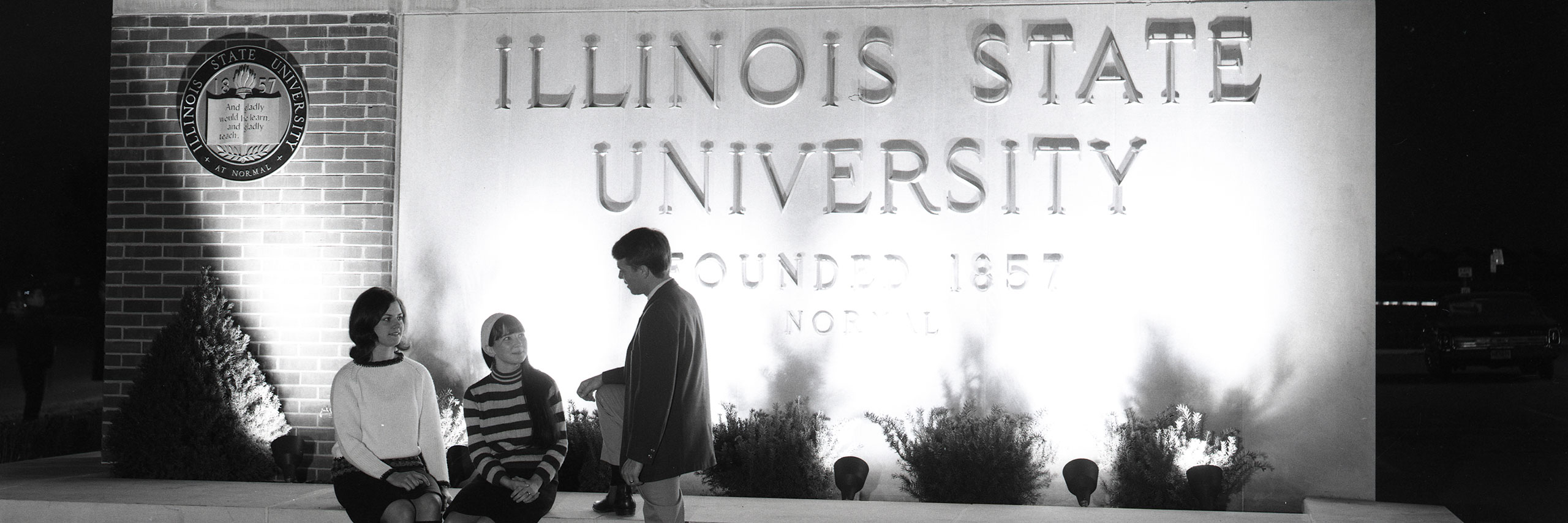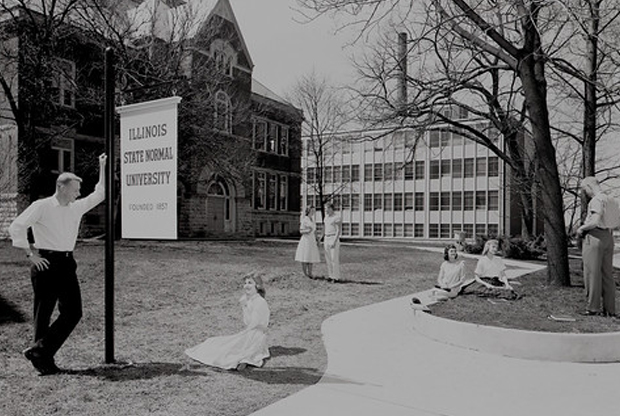

ISNU was one of five teachers' colleges in Illinois
Change to Illinois State University at Normal in 1964
Name became Illinois State University in 1967
The story of "Normal"
-
1857
A name for over 100 years
Illinois Governor William H. Bissell signed the law creating Illinois State Normal University (ISNU) on February 18, 1857. The name was chosen because the school was established to prepare teachers and "Normal" meant "teaching." Origins of the term go back to the French Revolution, with would-be teachers learning the standards, or "norms," of pedagogy. The name served the institution well for more than a century. In the aftermath of World War II, however, societal changes led to concerns from many that the name was too narrow for a school with a larger mission.
-
1950s
Groundwork for change
By the 1950s, more tax money was invested in higher education. Economic growth resulted in the need for a more educated workforce. The space and arms race with the USSR was raging. The G.I. bill sent more students to college, and there was awareness of a looming surge in the demand for higher education thanks to the baby boom.
ISNU was one of five teachers’ colleges in Illinois. Those in Carbondale, Macomb and Charleston had changed their names in 1947, with Dekalb following in 1955. Normal clung to the “Normal” reference, largely due to tradition and its reputation as the best university for teachers in the nation. As momentum gathered to drop the word from the name, battle lines were drawn. Younger male faculty wanted the change, while female educators who treasured the institution’s history had concerns about de-emphasizing teacher education. President Robert Bone stayed publicly neutral while privately encouraging leaders favoring the new name.
-
1962
The new ISU
A 1959 push failed, but a student-led "ISU in '62" effort was successful. The state approved the change to Illinois State University at Normal in summer 1963, effective January 1, 1964. The name became Illinois State University in 1967.
In 1966, the Illinois Board of Higher Education formally recognized the school as a multipurpose developing liberal arts university. Teacher education was re-emphasized five years later by the board, just as baby boomers were exiting K-12 schools. The lack of clarity led to a conflicted university vision that lasted through the 1980s, according to Professor of History Emeritus John Freed, author of the 2007 sesquicentennial history Educating Illinois.
It took time for ISU to become the University that name change proponents envisioned—one in which faculty research, teaching, and public service work together as complementary institutional strengths to become the premier undergraduate institution it is today.



